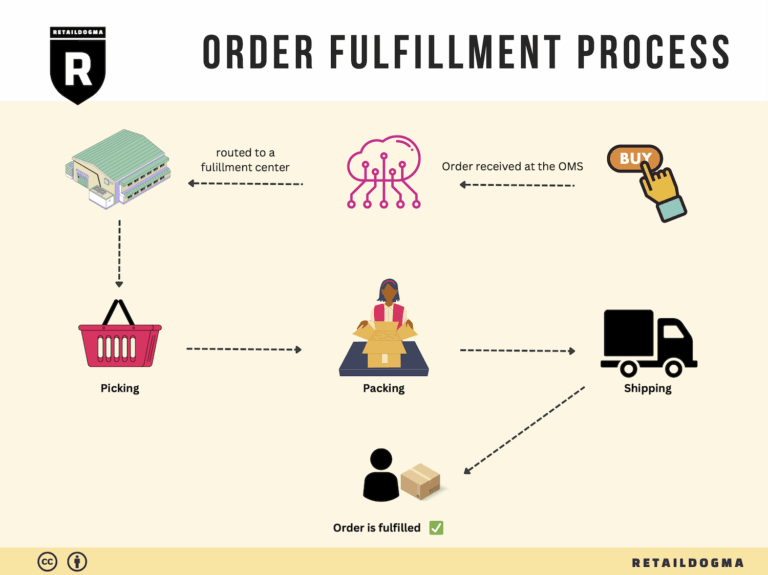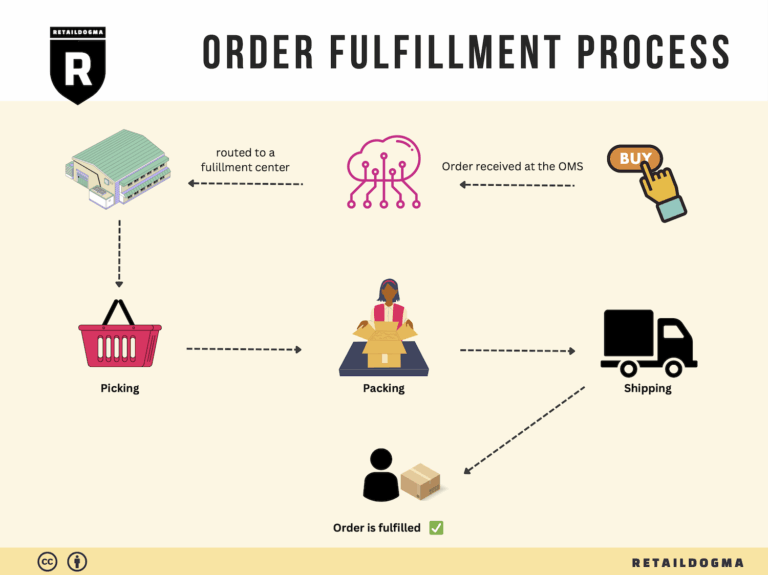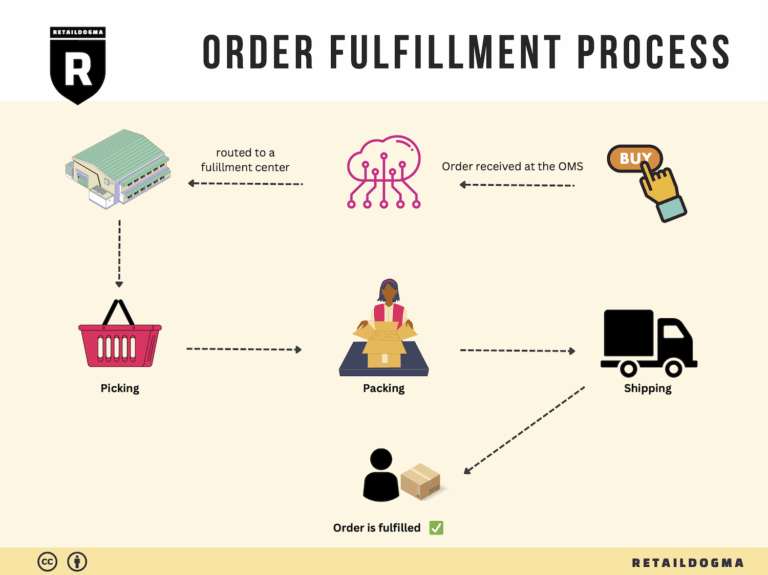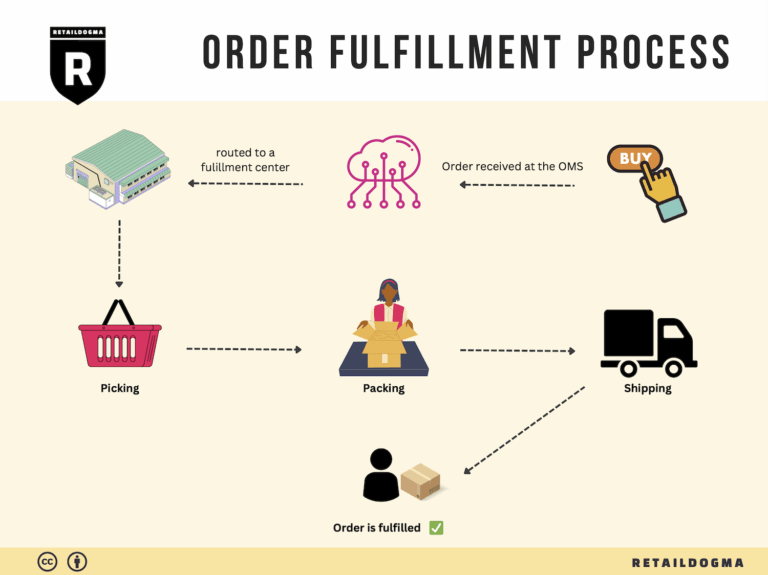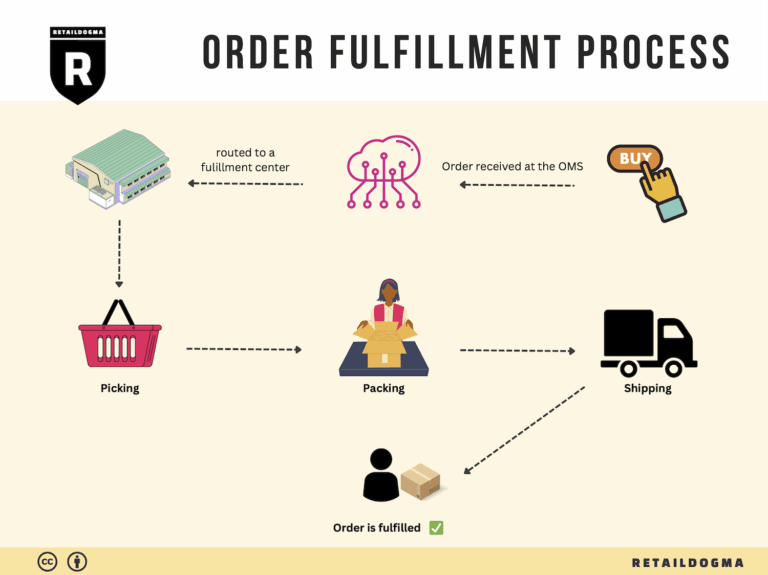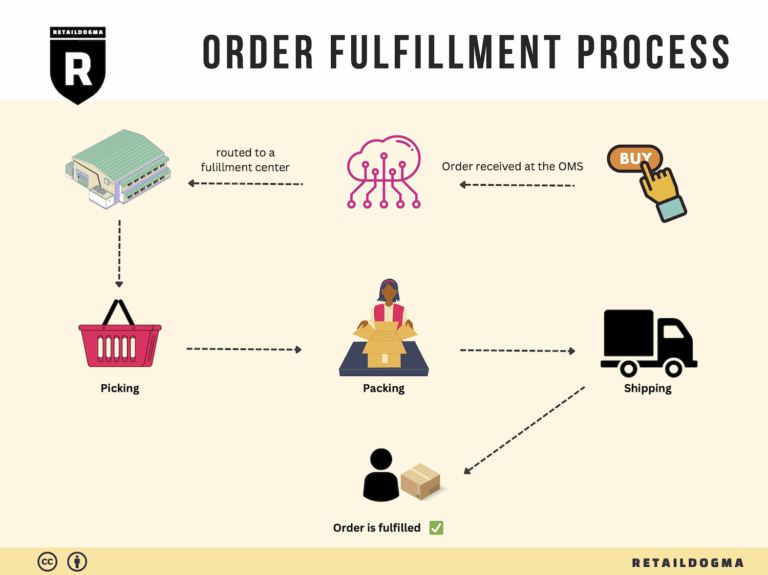How Order Fulfillment Works: A Step-by-Step Guide for Businesses
What is E-commerce Fulfillment? An Introduction for Growing Businesses
As e-commerce businesses grow, many owners find themselves facing a daunting challenge: the overwhelming task of packing and shipping orders efficiently. What once seemed like a manageable process can quickly spiral into chaos as order volumes increase. This is where e-commerce fulfillment comes into play, serving as a vital lifeline for businesses striving to scale their operations without compromising customer satisfaction.
Understanding E-commerce Fulfillment
At its core, fulfillment is simply the process of getting a product from your warehouse to your customer’s doorstep. This encompasses everything from receiving inventory and storing it, to picking, packing, and shipping orders. For many growing businesses, managing these logistics in-house can become cumbersome, detracting from their ability to focus on core operations, marketing, and customer engagement.
What This Guide Will Cover
In this guide, we will explore the various fulfillment models available to e-commerce businesses, including Third-Party Logistics (3PL) and Fulfillment by Amazon (FBA). Each model offers unique advantages and can significantly impact your operational efficiency and customer experience.
We will delve into the core services that fulfillment partners typically provide, such as inventory management, order processing, and shipping logistics. Understanding these services will help you identify what you truly need from a fulfillment partner.
Moreover, we will discuss essential criteria for choosing the right fulfillment partner for your business. Factors such as location, technology integration, scalability, and customer service are crucial in ensuring that your fulfillment strategy aligns with your business goals.
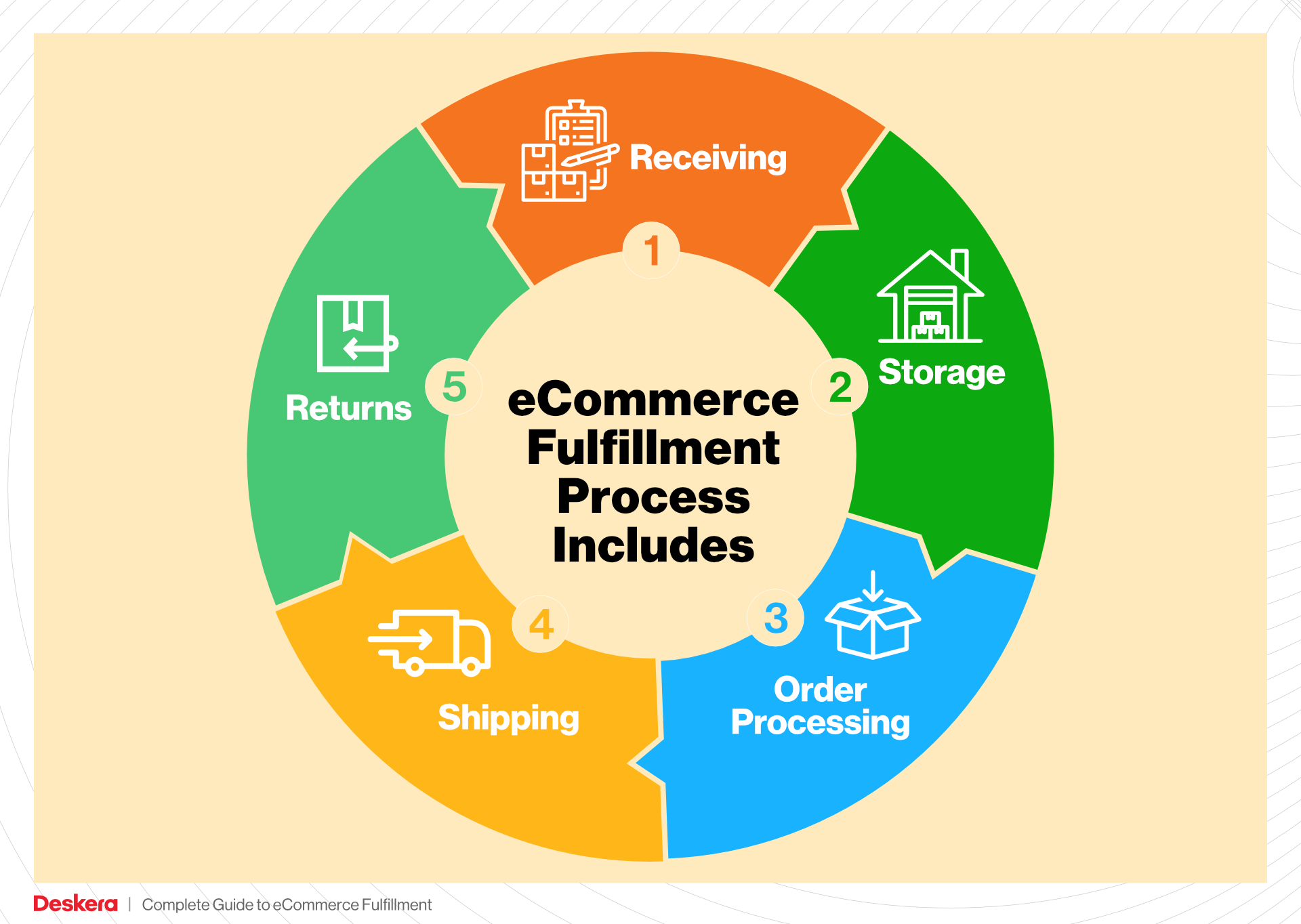
Lastly, pricing structures for fulfillment services can vary widely. We will break down the common pricing models, helping you understand how to budget for fulfillment and what to expect as your order volume fluctuates.
Empowering Smart Decisions
The ultimate goal of this guide is to empower e-commerce business owners and operations managers to make informed decisions about their logistics strategies. By equipping you with the knowledge of fulfillment processes, models, and partner selection, you can streamline your operations, enhance customer satisfaction, and focus on growing your business. With the right fulfillment strategy in place, your e-commerce venture can thrive, transforming logistics from a burden into a catalyst for success.
What You’ll Learn In This Guide
- What is E-commerce Fulfillment? An Introduction for Growing Businesses
- The Order Fulfillment Process: From ‘Buy’ Button to Customer’s Door
- Comparing Fulfillment Models: In-House vs. 3PL vs. Dropshipping
- A Deep Dive into Amazon FBA: Pros, Cons, and Who It’s For
- Core Services Offered by Fulfillment Centers
- How to Choose a Fulfillment Partner: A 6-Point Checklist
- Understanding Fulfillment Pricing: A Breakdown of Common Fees
- Frequently Asked Questions (FAQs) about Fulfillment
- Conclusion: Is Outsourcing Fulfillment the Right Move for Your Business?
- Important Disclaimer
The Order Fulfillment Process: From ‘Buy’ Button to Customer’s Door
1. Receiving Inventory
The first step in the order fulfillment process is receiving inventory. This involves accepting shipments from suppliers and verifying that the quantities and types of products match what was ordered. This step is crucial for maintaining accurate inventory levels and ensuring that the right products are available for customers when they place orders.
Upon receiving inventory, each product is assigned a Stock Keeping Unit (SKU), a unique identifier that helps track the item throughout the fulfillment process. Properly recording and managing SKUs not only helps in inventory tracking but also minimizes the chances of errors in order fulfillment. Discrepancies between what was ordered and what is received should be addressed immediately to avoid stockouts or overstock situations, which can impact customer satisfaction and operational efficiency.
2. Warehouse Storage
Once inventory is received and processed, the next step is warehouse storage. This involves organizing the products in a systematic manner within the warehouse. Efficient storage solutions are vital for quick access and retrieval of items when orders come in.
Key terms associated with this step include “slotting,” which refers to the strategic placement of products based on their demand and size. For instance, fast-moving items may be placed closer to the packing area, while slower-moving items can be stored further away. Proper warehouse layout and inventory management software play a significant role in optimizing storage space and improving overall workflow. Effective storage not only speeds up the picking process but also reduces the risk of misplacement and inventory discrepancies.
3. Order Picking
The order picking stage is where the actual fulfillment begins. When a customer places an order, warehouse staff retrieve the necessary items from storage based on a generated pick list, which details the products and quantities required for each order. This step is critical because the accuracy and efficiency of picking directly affect order fulfillment speed and customer satisfaction.
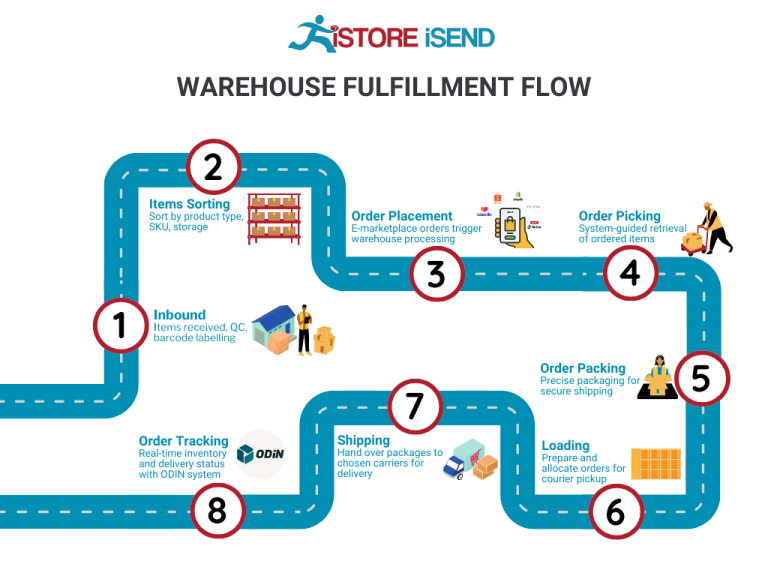
There are various picking methods, including single order picking, batch picking, and zone picking, each suited to different types of operations. For example, batch picking allows workers to fulfill multiple orders simultaneously, increasing efficiency in high-volume environments. Implementing best practices in order picking, such as using barcode scanning technology, can significantly reduce errors and improve accuracy, ensuring that customers receive the correct products.
4. Order Packing
After items are picked, they must be packed for shipment. This step involves carefully packaging products to prevent damage during transit while also preparing them for delivery. Proper packing is essential not just for protecting items but also for optimizing shipping costs.
Key considerations in this phase include using the right materials—such as boxes, bubble wrap, and packing peanuts—to secure items effectively. Additionally, including packing slips and any promotional materials can enhance the customer experience. The packing process also involves weighing the package and generating shipping labels, which are necessary for tracking and delivery purposes. A well-executed packing process can lead to reduced returns and increased customer satisfaction.
5. Shipping & Delivery
The final step in the order fulfillment process is shipping and delivery. Once orders are packed and labeled, they are handed over to shipping carriers for delivery to the customer’s address. This stage is critical as it directly impacts the customer’s perception of your business.
Timely delivery is a key performance indicator for e-commerce businesses. Utilizing shipping software that integrates with your fulfillment operations can streamline this process, allowing for real-time tracking and updates. Moreover, understanding shipping options—such as standard versus expedited shipping—can help you meet customer expectations while managing costs. Effective communication with customers regarding delivery timelines and tracking information can significantly enhance their experience and foster loyalty to your brand.
By mastering each step of the order fulfillment process—from receiving inventory to shipping and delivery—business owners can ensure their operations are not only efficient but also aligned with customer expectations, ultimately leading to greater satisfaction and repeat business.
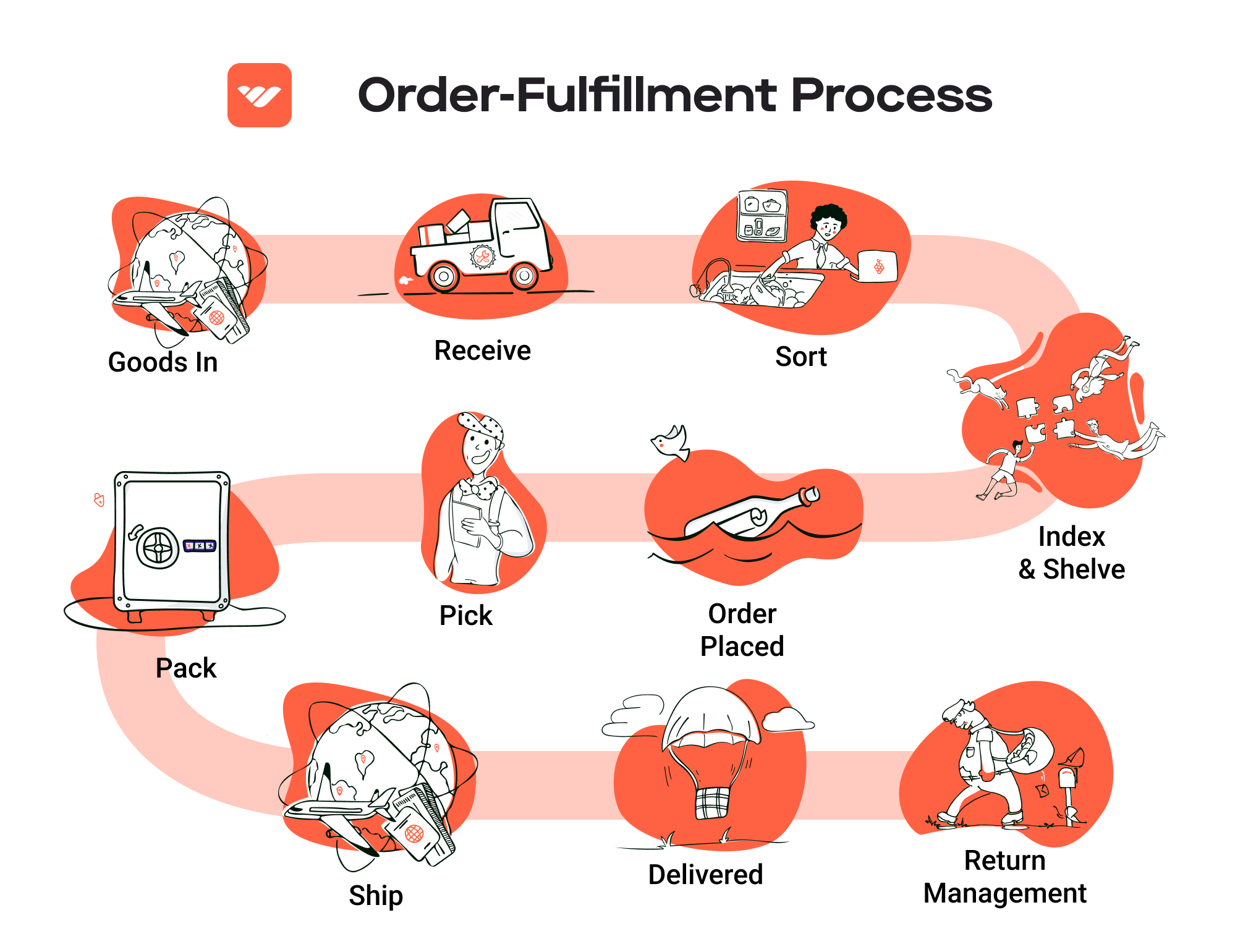
Comparing Fulfillment Models: In-House vs. 3PL vs. Dropshipping
Fulfillment Model Comparison
| Model | Who Handles Inventory | Best For (Business Stage) | Key Advantage | Key Disadvantage |
|---|---|---|---|---|
| In-House Fulfillment | Business itself | Established businesses | Full control over operations and inventory | High overhead costs and labor requirements |
| Third-Party Logistics (3PL) | 3PL provider | Growing to mid-sized businesses | Scalability and reduced operational burden | Less control over inventory and fulfillment processes |
| Dropshipping | Supplier | Startups and small businesses | Low startup costs and minimal risk | Longer shipping times and potential quality issues |
In-House Fulfillment
In-house fulfillment involves managing the entire logistics process internally, from inventory management to packing and shipping orders. This model is particularly beneficial for established businesses with the resources and infrastructure necessary to handle fulfillment efficiently. The key advantage of in-house fulfillment is the level of control it provides; businesses can dictate every aspect of the process, ensuring that branding, quality, and customer experience meet their standards. Additionally, having direct oversight can lead to better inventory management, allowing for immediate adjustments based on demand.
However, the disadvantages are significant. Operating an in-house fulfillment center requires substantial investment in facilities, technology, and human resources, leading to high overhead costs. Companies must also manage the complexities of warehousing, order processing, and shipping logistics, which can divert focus from core business activities. This model is often less flexible, making it challenging to scale operations quickly in response to market changes.
Third-Party Logistics (3PL)
Third-party logistics (3PL) providers offer businesses a comprehensive solution for order fulfillment, managing storage, inventory, and shipping on behalf of the company. This model is ideal for growing to mid-sized businesses that seek to scale operations without the burden of managing logistics internally. One of the primary advantages of partnering with a 3PL is scalability; businesses can easily adjust their logistics needs based on demand without incurring the costs associated with in-house fulfillment.
Moreover, 3PL providers typically have established networks, technology, and expertise that can improve efficiency and reduce shipping times. For example, VGM Fulfillment specializes in medical supply order fulfillment, providing a reliable service that can significantly enhance a business’s operational efficiency and customer satisfaction.
However, using a 3PL can lead to challenges in inventory control and order accuracy, as businesses may have less visibility and direct oversight of their stock and fulfillment processes. This can potentially result in discrepancies and miscommunication, affecting customer satisfaction. Additionally, the reliance on an external provider means that businesses are at the mercy of their 3PL’s performance and capabilities.
Dropshipping
Dropshipping is a fulfillment method where a business sells products without holding any inventory. Instead, when a customer places an order, the business purchases the item from a third-party supplier who then ships it directly to the customer. This model is particularly advantageous for startups and small businesses, as it requires minimal upfront investment and significantly lowers financial risk.
The primary benefit of dropshipping is the reduced overhead; there are no costs associated with warehousing or inventory management. This allows entrepreneurs to focus on marketing and customer service rather than logistics. Additionally, dropshipping offers a vast selection of products, enabling businesses to experiment with various offerings without the commitment of purchasing inventory upfront.
However, dropshipping does come with its drawbacks. One of the main issues is the lack of control over the fulfillment process, which can lead to longer shipping times and inconsistent product quality. Businesses may also face challenges with customer service, as they rely on suppliers to meet quality and delivery expectations. Furthermore, competition can be fierce in the dropshipping space, often resulting in thinner margins and price wars.
Conclusion
Choosing the right fulfillment model is crucial for scaling an e-commerce business effectively. Each model—whether in-house fulfillment, 3PL, or dropshipping—has its unique advantages and disadvantages, catering to different business stages and operational needs. Businesses must assess their resources, growth objectives, and customer expectations to determine the fulfillment strategy that aligns best with their goals. Understanding these models enables e-commerce owners to make informed decisions that will enhance efficiency, reduce costs, and improve customer satisfaction.
A Deep Dive into Amazon FBA: Pros, Cons, and Who It’s For
Understanding Fulfillment by Amazon (FBA)
Fulfillment by Amazon (FBA) is a service provided by Amazon that allows sellers to store their products in Amazon’s fulfillment centers. Amazon then takes care of storage, packaging, and shipping of the products to customers. This service not only simplifies logistics for sellers but also enhances the shopping experience for customers, as they benefit from Amazon’s extensive distribution network and customer service.
When a customer orders a product that is fulfilled by Amazon, the process is seamless: Amazon picks the product from the warehouse, packs it, and ships it directly to the customer. Additionally, FBA products are eligible for Amazon Prime, which can significantly increase sales volume due to the appeal of fast, free shipping.
How FBA Works
- Registration: Sellers begin by signing up for an Amazon seller account and selecting FBA as their fulfillment method.
- Inventory Shipment: Sellers prepare their products according to Amazon’s guidelines and ship them to one or more of Amazon’s fulfillment centers.
- Storage and Management: Once the products arrive, Amazon stores them in their warehouses. Sellers can monitor their inventory through the seller dashboard.
- Order Processing: When a customer orders a product, Amazon handles the picking, packing, and shipping. They also manage customer service inquiries and returns.
- Payment: After a sale, Amazon collects the payment from the customer and disburses the seller’s earnings, minus FBA fees.
Pros of FBA
-
Prime Eligibility: One of the most significant advantages of using FBA is that products become eligible for Amazon Prime. This opens up access to millions of Prime members who prefer to purchase items with fast shipping options, often leading to increased sales.
-
Customer Trust: Leveraging Amazon’s brand can enhance seller credibility. Customers are more likely to purchase products fulfilled by Amazon due to the perceived reliability and quality of service associated with the Amazon brand.
-
Multi-Channel Fulfillment: Sellers can use FBA to fulfill orders from other sales channels, such as their own websites or other e-commerce platforms. This means that Amazon can handle logistics for various sales avenues, simplifying operations for sellers.
-
Scalability: FBA allows sellers to scale their business without the need to invest heavily in warehousing and logistics. Amazon’s infrastructure supports growth, making it easier to manage an increasing volume of orders.
-
Comprehensive Customer Service: Amazon provides customer service for FBA orders, handling inquiries and returns. This reduces the burden on sellers, allowing them to focus on other aspects of their business.
Cons of FBA
-
High Fees: FBA incurs various fees, including storage fees, fulfillment fees, and long-term storage fees for items that don’t sell quickly. These costs can eat into profit margins, especially for low-margin products.
-
Strict Inventory Rules: Amazon has specific requirements regarding inventory management. Sellers must adhere to these guidelines, which can be challenging for those unfamiliar with Amazon’s policies.
-
Commingling Risks: FBA uses a commingled inventory model, meaning that the products from different sellers may be stored together. This can pose risks if another seller’s inventory is defective or if there are discrepancies in quality, potentially damaging the seller’s reputation.
-
Limited Control: By relying on Amazon for fulfillment, sellers may have less control over how their products are stored and shipped. This can be an issue for sellers who require specific handling or packaging.
-
Potential for Stockouts: If a seller’s products are not properly managed, they can run into stockout situations, leading to lost sales and potentially harming their seller rating.
Who is FBA Best For?
FBA is particularly beneficial for small to medium-sized businesses that want to streamline their logistics and take advantage of Amazon’s vast customer base. It is ideal for sellers who:
-
Sell High-Volume Products: Businesses with high sales volume can benefit from FBA’s efficiency and customer service, making it easier to manage large quantities of orders without needing additional logistics support.
-
Focus on Growth: Sellers looking to scale their operations quickly can leverage FBA to handle the complexities of shipping and fulfillment, allowing them to focus on marketing and product development.
-
Want to Reach Amazon’s Audience: Companies that want to tap into Amazon’s Prime membership base and benefit from the trust associated with the Amazon brand will find FBA particularly advantageous.
-
Have Limited Resources: Smaller businesses or entrepreneurs who may not have the resources to manage their own warehousing and logistics can save time and money by outsourcing these operations to Amazon.
In conclusion, Fulfillment by Amazon offers a powerful solution for e-commerce businesses looking to simplify their logistics and reach a wider audience. While there are challenges associated with costs and control, the benefits of Prime eligibility, customer trust, and operational scalability make it a compelling option for many sellers. Understanding the pros and cons, alongside a clear assessment of business needs, will help sellers make an informed decision about whether FBA is the right fit for their operations.
Core Services Offered by Fulfillment Centers
Inventory Management & Warehousing
Effective inventory management and warehousing are foundational services offered by fulfillment centers. This involves the systematic control of inventory levels, storage, and retrieval processes to ensure that products are available when needed without overstocking. Fulfillment centers utilize sophisticated inventory management systems that provide real-time tracking, automated stock replenishment, and detailed reporting.
The benefits of robust inventory management are manifold. First, it minimizes the risk of stockouts, ensuring that e-commerce businesses can meet customer demand promptly. This reliability fosters customer satisfaction and loyalty, as consumers appreciate quick fulfillment times. Second, effective warehousing solutions optimize space utilization, allowing businesses to reduce overhead costs associated with excess inventory. Finally, accurate inventory data helps businesses make informed purchasing decisions, leading to better cash flow management and reduced carrying costs.
Pick and Pack Services
Pick and pack services are at the heart of order fulfillment, encompassing the processes of selecting products from storage and packaging them for shipment. Fulfillment centers employ trained staff and advanced technology to ensure accuracy and speed in these operations. For instance, barcoding systems and automated picking tools streamline the selection process, reducing human error and increasing efficiency.
The primary advantage of pick and pack services lies in their impact on order accuracy and fulfillment speed. In the competitive world of e-commerce, delivering the right product to the right customer at the right time is critical. High accuracy rates in order fulfillment not only enhance customer satisfaction but also minimize costly returns and exchanges. Additionally, efficient pick and pack operations allow businesses to scale their order volumes without compromising quality, ultimately supporting growth and improving overall profitability.
Kitting and Assembly
Kitting and assembly services involve the grouping of individual items into ready-to-ship sets, or the assembly of multi-part products before they are sent to customers. This service is particularly beneficial for businesses that offer bundled products or require pre-assembly for complex items. Fulfillment centers can manage the entire kitting process, from sourcing components to assembling and packaging the final product.
The benefits of kitting and assembly are significant. By outsourcing this function, e-commerce businesses can save valuable time and resources, allowing them to focus on core competencies such as marketing and customer service. Furthermore, kitting can enhance perceived value for customers, as bundled offerings often come at a competitive price point and provide convenience. This service can also reduce shipping costs by consolidating multiple items into a single shipment, leading to improved margins.
Returns Management (Reverse Logistics)
Returns management, or reverse logistics, is a critical service provided by fulfillment centers, addressing the challenges associated with product returns. This process involves the handling of returned items, including inspection, restocking, and processing refunds or exchanges. An effective returns management system ensures that returns are processed efficiently and that inventory levels are updated accurately.
The importance of robust returns management cannot be overstated. In e-commerce, where consumers expect hassle-free returns, having a streamlined process can significantly enhance customer satisfaction and loyalty. An effective returns strategy reduces the financial impact of returns by minimizing processing time and errors, thereby lowering operational costs. Additionally, insights gained from returns data can inform product quality improvements and inventory decisions, ultimately leading to better business outcomes.
In summary, the core services offered by fulfillment centers, including inventory management and warehousing, pick and pack services, kitting and assembly, and returns management, provide essential support for e-commerce businesses. By leveraging these services, companies can enhance their operational efficiency, reduce costs, and improve customer satisfaction—key factors for scaling and succeeding in the competitive online marketplace.
How to Choose a Fulfillment Partner: A 6-Point Checklist
Location & Warehouse Network
Importance: The geographical location of a fulfillment partner’s warehouses is crucial for timely delivery and cost-effective shipping. A partner with strategically located warehouses can significantly reduce transit times and shipping costs, which is particularly vital for e-commerce businesses aiming to maintain customer satisfaction.
Questions to Ask:
– Where are your warehouses located, and how do they align with our target markets?
– What is your average shipping time to key regions?
– Do you have a plan for expanding your warehouse network in the future?
Technology & Integrations
Importance: In today’s fast-paced e-commerce environment, seamless technology integration is essential. A fulfillment partner should have robust systems that can integrate with your e-commerce platform, inventory management systems, and customer relationship management tools. This ensures real-time data exchange, inventory accuracy, and streamlined operations.
Questions to Ask:
– What e-commerce platforms and software systems do you integrate with?
– Can you provide API access for custom integrations?
– How do you handle data security and compliance with regulations like HIPAA for sensitive information?
Specializations (e.g., cold storage, oversized items)
Importance: Depending on your product range, you may require a fulfillment partner that specializes in certain types of products. For example, if you deal with medical supplies or equipment like CPAP machines, ensure that the partner has the expertise and facilities to handle such items, including cold storage if necessary.
Questions to Ask:
– What types of products do you specialize in handling?
– Do you have specific facilities or equipment for specialized items, such as cold storage or oversized products?
– Can you provide examples of clients in similar industries you have successfully served?
Scalability & Capacity
Importance: As your business grows, your fulfillment needs will likely change. A good fulfillment partner should be able to scale operations to meet increased demand without compromising service quality. Assessing their capacity to handle fluctuations in order volume is critical for long-term partnerships.
Questions to Ask:
– How do you handle seasonal spikes in order volume?
– What is your current capacity, and how do you plan to manage future growth?
– Can you provide case studies or references from clients who have scaled their operations with you?
Pricing and Contracts
Importance: Understanding the pricing structure and contract terms is vital to ensure that your fulfillment partner aligns with your budget and financial goals. Look for transparency in pricing, including any hidden fees that could affect your bottom line.
Questions to Ask:
– What is your pricing model (per order, per item, monthly fees)?
– Are there any additional costs for services like returns processing or special packaging?
– What are the terms of your contract, and is there flexibility for renegotiation or termination?
Customer Support & Reviews
Importance: Reliable customer support is essential for addressing issues that may arise during the fulfillment process. Additionally, researching reviews and testimonials can provide insight into the partner’s reputation and reliability.
Questions to Ask:
– What levels of customer support do you offer (dedicated account manager, 24/7 support)?
– Can you provide references from current or past clients?
– How do you handle complaints or issues, and what is your typical response time?
Conclusion
Choosing the right fulfillment partner is a critical decision that can significantly affect your e-commerce business’s operational efficiency and customer satisfaction. By using this checklist, you can ensure that you are considering all necessary factors to make an informed choice. Take the time to evaluate potential partners thoroughly, asking the right questions and seeking the information you need to find a partner that aligns with your business goals and values.
Understanding Fulfillment Pricing: A Breakdown of Common Fees
Initial Setup Fees
When partnering with a fulfillment service, initial setup fees often come into play. These fees cover the costs associated with onboarding your business into the fulfillment center’s system. This may include the integration of your e-commerce platform with their logistics software, data migration, and the creation of your product catalog.
The calculation of setup fees can vary widely depending on the complexity of your operations. For example, if you require custom integrations or have a large inventory that needs to be uploaded into the system, expect higher fees. Conversely, a straightforward setup with limited products may incur lower costs. Typically, this fee can range from a few hundred to several thousand dollars.
Receiving Fees
Receiving fees are charged when the fulfillment center receives and processes your inventory. This fee generally covers the labor and equipment needed to unload, inspect, and store your products.
Calculating receiving fees is often based on the volume of inventory being received. For instance, some fulfillment centers charge a flat fee per pallet or per box, while others may implement a per-item fee. If your inventory consists of numerous small items, this can significantly impact your costs. Understanding the volume and frequency of your shipments can help you estimate these fees accurately.
Storage Fees (per pallet/bin)
Storage fees are incurred for the space your inventory occupies within the fulfillment center. These fees can be structured in various ways, but they are commonly charged on a per-pallet or per-bin basis.
The calculation of storage fees is typically based on the amount of space your goods take up and the duration they remain in the warehouse. For example, if you have a large inventory that requires multiple pallets, the fees can accumulate quickly. It’s essential to keep track of your inventory turnover rates; high turnover can mitigate storage costs, while low turnover may lead to increased fees.
Pick & Pack Fees (per item/order)
Pick and pack fees are charged for the labor involved in retrieving items from inventory, packaging them, and preparing them for shipment. This is a crucial aspect of order fulfillment, as it directly impacts the speed and accuracy of your deliveries.
These fees can be calculated in several ways. Some fulfillment centers charge a flat fee per order, while others may charge per item included in an order. For example, if a customer orders multiple items, the cost will be higher compared to a single-item order. Understanding your average order size can help you predict these costs more accurately and find ways to optimize your order fulfillment processes.
Shipping Fees
Shipping fees are among the most significant costs associated with fulfillment. These fees cover the transportation of your products from the fulfillment center to your customers. Shipping costs can vary based on several factors, including package weight, dimensions, destination, and shipping speed (standard vs. expedited).
Shipping fees can be calculated using a variety of methods, such as flat-rate shipping, weight-based pricing, or distance-based pricing. Additionally, many fulfillment centers have partnerships with major carriers, allowing them to negotiate better rates that they can pass on to you. Understanding your shipping volume and customer locations can help you choose the most cost-effective shipping strategy.
Tips for Getting an Accurate Quote
-
Provide Detailed Information: When requesting quotes, provide fulfillment centers with detailed information about your products, order volumes, and expected shipping destinations. This will help them give you a more accurate estimate.
-
Ask About Pricing Models: Different fulfillment centers may have varying pricing structures. Inquire about their pricing models for each fee type to understand how they align with your business needs.
-
Consider Additional Services: If you require special services (like kitting, custom packaging, or returns management), be sure to discuss these upfront, as they can significantly impact your overall costs.
-
Negotiate Terms: Don’t hesitate to negotiate terms and fees. Many fulfillment centers are open to customization, especially if you can commit to a higher volume of business.
-
Request a Trial Period: If possible, request a trial period to assess the service level and costs without a long-term commitment. This allows you to evaluate how well the fulfillment center meets your needs before fully engaging.
By understanding the different types of fulfillment fees and how they are calculated, you can make informed decisions that will enhance your e-commerce operations and contribute to your business’s growth.
Frequently Asked Questions (FAQs) about Fulfillment
1. What is VGM Fulfillment?
VGM Fulfillment is a specialized order fulfillment service that primarily focuses on the healthcare industry, particularly in CPAP machine and medical supply order processing. They provide a comprehensive solution that includes picking, packing, shipping, and inventory management, ensuring that healthcare providers can efficiently serve their patients without the overhead of managing these logistics themselves.
2. How does VGM Fulfillment integrate with my e-commerce platform?
VGM Fulfillment offers seamless integration with various billing, patient management, and e-commerce platforms. They provide customized integration options, ensuring that your specific system requirements are met. This integration simplifies order processing and enhances operational efficiency, allowing for real-time updates and streamlined workflows.
3. What are the benefits of using a fulfillment service like VGM Fulfillment?
Using VGM Fulfillment can significantly reduce operational burdens for e-commerce businesses. Benefits include:
– Cost Savings: Lower overhead costs associated with inventory management and logistics.
– Speed and Accuracy: High order accuracy rates (up to 99.6%) and fast shipping times (typically 2-4 days for most U.S. locations).
– Expertise: Access to specialized knowledge in CPAP and medical supply fulfillment, improving service delivery.
– Scalability: Ability to scale operations quickly without the need for additional infrastructure.
4. How much do fulfillment services cost?
The cost of fulfillment services varies based on several factors, including order volume, storage space, and specific services required (like kitting or custom packaging). VGM Fulfillment typically provides a customized quote based on your business needs, ensuring you get a cost-effective solution tailored to your operational scale.
5. What is the difference between a warehouse and a fulfillment center?
A warehouse is primarily a storage facility where goods are kept until they are needed, whereas a fulfillment center is a specialized facility designed to handle order processing, packing, and shipping directly to customers. Fulfillment centers focus on efficient order fulfillment and customer service, offering services like inventory management, order tracking, and returns processing.
6. What is a 3PL (Third-Party Logistics)?
A 3PL is a company that provides outsourced logistics services, including warehousing, transportation, and order fulfillment. VGM Fulfillment operates as a 3PL, allowing businesses to leverage their expertise and infrastructure to manage supply chain operations efficiently, enabling clients to focus on core business activities.
7. How does VGM Fulfillment ensure order accuracy and reliability?
VGM Fulfillment employs advanced technology and rigorous processes to maintain high levels of order accuracy and reliability. Their systems are designed to minimize human error through automated picking and packing, regular inventory audits, and a commitment to quality control, ensuring that orders are processed correctly every time.
8. Can I track my orders with VGM Fulfillment?
Yes, VGM Fulfillment provides order tracking capabilities that allow you to monitor the status of your shipments in real-time. Customers receive automatic updates on their order status, enhancing transparency and improving customer satisfaction.
9. What types of products can VGM Fulfillment handle?
VGM Fulfillment specializes in a range of medical supplies, including CPAP machines, resupply orders, and other healthcare products. Their extensive network and expertise enable them to efficiently manage the complexities of medical supply logistics, ensuring timely delivery and compliance with industry regulations.
10. How can I get started with VGM Fulfillment?
To begin using VGM Fulfillment services, you can contact their team directly through their website. They will guide you through the onboarding process, including discussing your specific needs, integration options, and customized service plans. A dedicated representative will assist you in setting up the systems and processes necessary for a smooth transition.
Conclusion: Is Outsourcing Fulfillment the Right Move for Your Business?
Assessing the Value of Outsourcing Fulfillment
Outsourcing your fulfillment services can be a transformative decision for your e-commerce business. By partnering with a specialized fulfillment provider like VGM Fulfillment, you can unlock a multitude of benefits that streamline operations and enhance your overall service delivery.
One of the most significant advantages of outsourcing is the time savings it affords. Managing inventory, shipping, and logistics can be a time-consuming endeavor that distracts you from your core competencies—growing your business and serving your customers. With a dedicated fulfillment partner, you can refocus your efforts on strategic initiatives that drive revenue and customer satisfaction.
Scalability is another critical benefit. As your business grows, so do the complexities of order management. A fulfillment partner can accommodate fluctuations in order volume, allowing you to scale operations without the burden of investing in additional warehousing or labor. This flexibility ensures that you can meet customer demand efficiently, regardless of the season or market conditions.
Moreover, expertise in logistics and fulfillment processes is paramount. A specialized provider brings industry knowledge, technology, and best practices that can significantly enhance order accuracy and delivery speed. This expertise not only minimizes errors but also elevates your brand’s reputation by ensuring timely and reliable service.
However, the success of outsourcing hinges on selecting the right partner. It’s crucial to choose a fulfillment service that aligns with your business needs, offers customized solutions, and has a proven track record of reliability and efficiency.
Take Action
To determine if outsourcing fulfillment is the right move for your business, conduct a thorough audit of your current shipping and logistics processes. Identify pain points, inefficiencies, and growth opportunities. This evaluation will provide valuable insights and help you make an informed decision about whether to partner with a fulfillment provider. Don’t underestimate the impact that a strategic partnership can have on your operational success and overall growth trajectory.
Important Disclaimer
⚠️ Important Disclaimer
The information in this guide is for educational purposes. Fulfillment services, pricing, and platform features change frequently. Always conduct your own due diligence and consult with providers directly before making business decisions.

